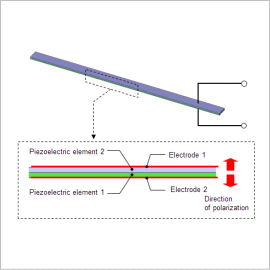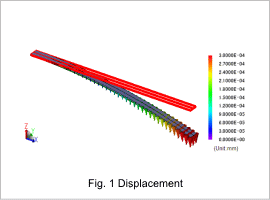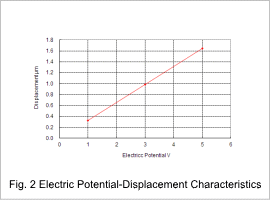*Please prepare a license ID and password for the license administrator.
*It is different from the service for JMAG WEB MEMBER (free membership). Please be careful.
Overview

Piezoelectric elements are used as actuators and sensors, as well as oscillator circuits and filter circuits in the analog electronic circuits. When the electric potential is applied, the piezoelectric element is deformed. This is called the converse piezoelectric effect. In JMAG, the analysis of the piezoelectric actuator using the converse piezoelectric effect can be performed by specifying the permittivity matrix and the electric potential for the material.
This note presents the use of structural analysis to evaluate the displacement of a bimorph piezoelectric actuator, caused by the inverse piezoelectric effect.
This note presents the use of structural analysis to evaluate the displacement of a bimorph piezoelectric actuator, caused by the inverse piezoelectric effect.
Displacement

Fig. 1 shows the state of displacement and the displacement vector. The part outlined in red is the piezoelectric actuator at the initial position. In this analysis, one edge of the piezoelectric actuator is secured, so the other edge can freely be displaced when the electric potential is applied.
Electric Potential-Displacement Characteristics

Fig. 2 shows the electric potential-displacement characteristics. The displacement increases linearly with electric potential. The electric potential to obtain the target displacement can be estimated from the coefficient which is obtained from the slope of the line.


